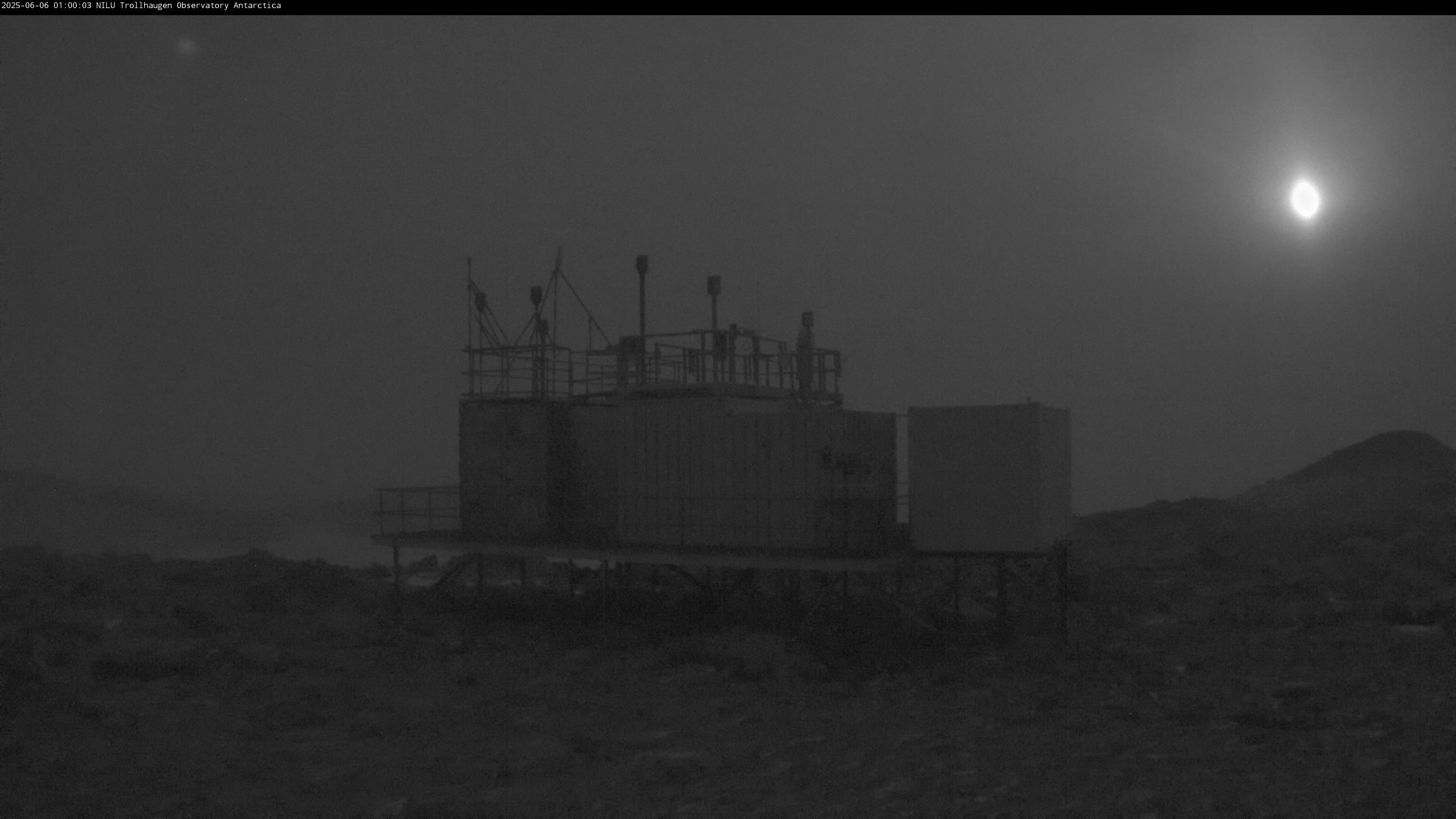The most important activities at NILU’s Trollhaugen observatory in Antarctica include characterising the composition of the atmosphere, and measuring seasonal/annual variations in and transport of air pollutants to the region.
The Trollhaugen observatory is located at Trollhaugen mountain, not far from the Norwegian research station Troll in Dronning Maud Land, Antarctica. The observatory is located at 72°00’42″S 02°32’06″E, and is unperturbed by local activity. Its location, at 1553 metres above sea level and between the Antarctic plateau and the coast, is unique on the continent..
NILU’s Troll observatory was established in January 2007, supported by the NARE (Norwegian Antarctic Research Expeditions) research programme. The observatory was initially established near the main station, Troll, but was moved to the mountain Trollhaugen in February 2014. At Trollhaugen, the observatory is approximately 1 km east of the Troll research station, in the Jutulsessen nunatak area, about 235 km from the coast. In this area, air masses from the ocean and the continent meet and mix.
The following are measured at Trollhaugen:
- Mercury
- Ground-level ozone
- Aerosols (physical and optical properties)
- UV radiation and total ozone
- Organic environmental pollutants (POPs)
- Hydrocarbons, CFCs, HCFCs and HFCs
- CO2 and CO
Link to data from the measurements at Trollhaugen (EBAS)
In addition, a large air sample is taken once every six months. This sample is included in an air archive for analyses of new chemical species and to study issues that arise in the future.
Trollhaugen is one of the few observatories that has continuous year-round monitoring in Antarctica. NILU is in charge of the scientific activities at the observatory, while technical personnel from Troll station are responsible for daily maintenance.
NILU does research from the Arctic to the Antarctic
The reason why it is so important to measure air quality in the Arctic and Antarctica is that these are the most vulnerable areas. It is here the scientists first discover any changes.
With observatories both at Trollhaugen in Antarctica and on Zeppelin Mountain in Svalbard, NILU is one of the few institutions that conduct atmospheric research at both “poles”. By comparing measurement results from the two, we hope to acquire important new knowledge about transport and effects related to pollution on a global scale, contributing to international research in this field.
Webcamera feed from Trollhaugen

Last update: 6. June 2025 01:00
